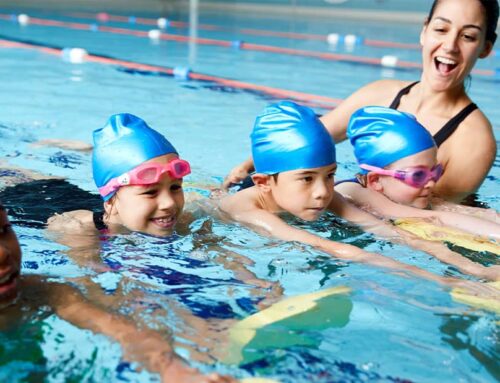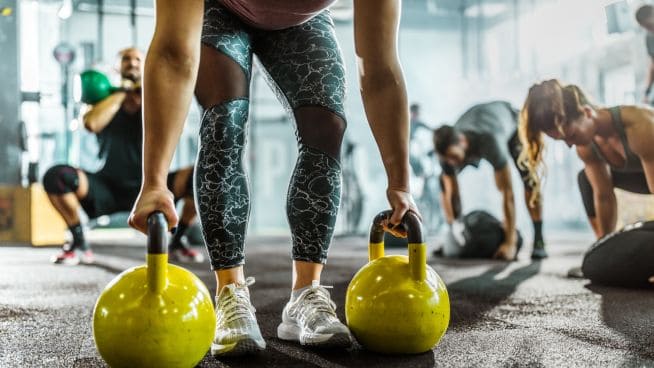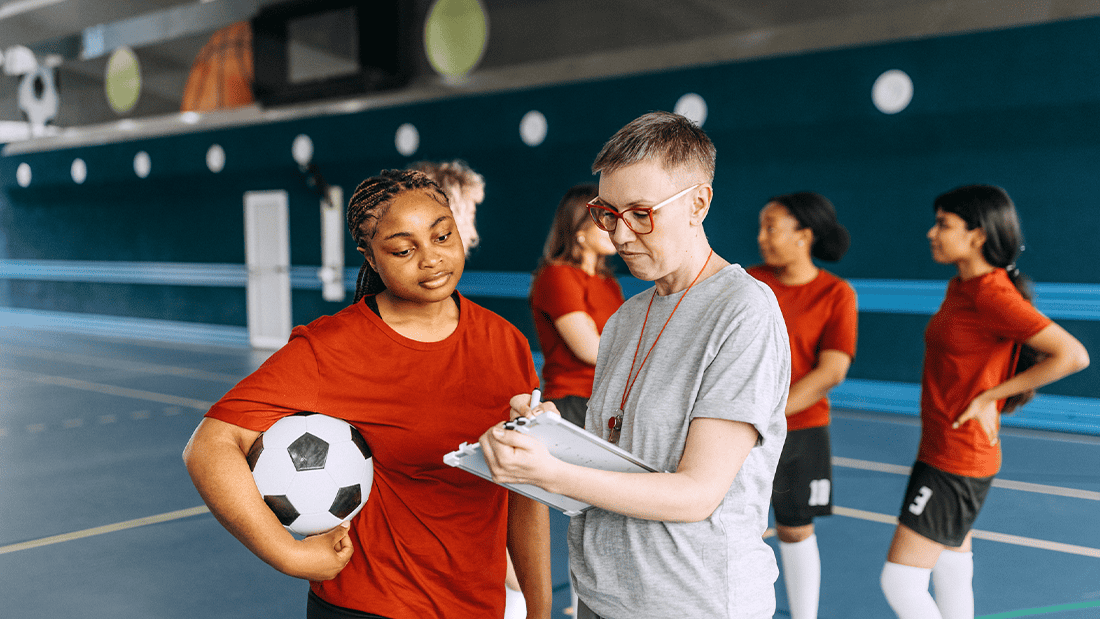How to Prevent Rhabdomyolysis in Youth Athletes
Many recent fitness trends are all about pushing yourself to the max. For those properly conditioned, intense HIIT, CrossFit, or similar workouts can prove to be a physical challenge. For those beginning a fitness or sport, they may not be prepared, and intense training or conditioning sessions could be fatal.
Summer brings about conditioning camps for several high school and college sports. Many of these young athletes are coming in without a vast background or knowledge of proper training. Not everyone on the team will be conditioned to the same level; this is something coaches, athletic trainers, parents, and student-athletes need to remember. No pain, no gain is not the way to go. Pushing oneself to the point of exhaustion could lead to a medical condition called rhabdomyolysis.
Rhabdomyolysis, according to the research article, Rhabdomyolysis in adolescent athletes: a review of cases, is a muscle injury where the muscle tissue rapidly breaks down.
Rhabdomyolysis is a syndrome characterized by muscle pain, weakness, and myoglobinuria and ranges in severity from asymptomatic to life-threatening with acute kidney failure. While a common condition in adult populations, it is understudied in pediatrics, and the majority of adolescent cases are likely exercise-induced, caused by strenuous exercise in athletes. Recently, in our pediatric sports medicine practice, we have seen numerous cases of late adolescent high school athletes who present with severe muscle pain and were found to have elevated creatine kinase levels.
Rhabdomyolysis symptoms range from mild to severe and can appear as soon as one day after a strenuous training session. Signs to look for include:
- Muscle swelling
- Weak, tender, and sore muscles
- Urine that is brown, red or tea-colored
- Lightheadedness
- Dehydration
Rhabdomyolysis is not too common, affecting about 26,000 individuals a year. However, monitoring athletes, especially in outdoor summer conditioning workouts, is key to preventing this medical crisis.
What can coaches, trainers, parents, and athletes do to prevent rhabdomyolysis?
- Slowly ramp up an exercise program or summer conditioning.
- Monitor athletes for signs of exhaustion in heat and humidity. Allow ample time for rest and hydration to prevent not only rhabdomyolysis but also heat exhaustion or heat stroke.
- Stay hydrated. Beverages such as Gatorade or Propel can help replace fluid and electrolytes lost with vigorous exercise.
- Stay cool. Take breaks in shady areas and apply cool, wet towels when needed.
- Avoid consumption of excess caffeine, alcohol, or illegal drugs.
- Consult with your doctor if you are on certain medications and which to engage in ramped-up physical activity or team sports.
If rhabdomyolysis does occur, seek emergency medical attention. Medical professionals can provide fluids and electrolytes intravenously. Hydrating the body can help to flush out the damaged cells and toxins while keeping the kidneys healthy. Depending on the severity, the young athlete may be hospitalized for a couple of days. In severe cases, dialysis is required to assist kidneys with proper functioning as this disorder can damage or shut down these organs. Following medical clearance, the athlete should work with a physical therapist to focus on a slow and monitoring progression of strength training and conditioning to return to sport.
Rhabdomyolysis is treatable, but the key is to prevent the issue before it happens. Encourage athletes to stay hydrated during intense workouts and conditioning sessions. Avoid ramping up conditioning workouts too quickly, and encourage hard work, but do not threaten or push athletes through their threshold level. Youth athletes want to prove themselves to coaches and the team, but there is plenty of time to progress in training. Focus on foundational skills and build workouts over time. While rare, rhabdomyolysis can impact any athlete of any age – and can take them out of the game for good.
Want to learn more about rhabdomyolysis? CLICK HERE
RECOMMENDED FOR YOU
MOST POPULAR
How to Prevent Rhabdomyolysis in Youth Athletes
Many recent fitness trends are all about pushing yourself to the max. For those properly conditioned, intense HIIT, CrossFit, or similar workouts can prove to be a physical challenge. For those beginning a fitness or sport, they may not be prepared, and intense training or conditioning sessions could be fatal.
Summer brings about conditioning camps for several high school and college sports. Many of these young athletes are coming in without a vast background or knowledge of proper training. Not everyone on the team will be conditioned to the same level; this is something coaches, athletic trainers, parents, and student-athletes need to remember. No pain, no gain is not the way to go. Pushing oneself to the point of exhaustion could lead to a medical condition called rhabdomyolysis.
Rhabdomyolysis, according to the research article, Rhabdomyolysis in adolescent athletes: a review of cases, is a muscle injury where the muscle tissue rapidly breaks down.
Rhabdomyolysis is a syndrome characterized by muscle pain, weakness, and myoglobinuria and ranges in severity from asymptomatic to life-threatening with acute kidney failure. While a common condition in adult populations, it is understudied in pediatrics, and the majority of adolescent cases are likely exercise-induced, caused by strenuous exercise in athletes. Recently, in our pediatric sports medicine practice, we have seen numerous cases of late adolescent high school athletes who present with severe muscle pain and were found to have elevated creatine kinase levels.
Rhabdomyolysis symptoms range from mild to severe and can appear as soon as one day after a strenuous training session. Signs to look for include:
- Muscle swelling
- Weak, tender, and sore muscles
- Urine that is brown, red or tea-colored
- Lightheadedness
- Dehydration
Rhabdomyolysis is not too common, affecting about 26,000 individuals a year. However, monitoring athletes, especially in outdoor summer conditioning workouts, is key to preventing this medical crisis.
What can coaches, trainers, parents, and athletes do to prevent rhabdomyolysis?
- Slowly ramp up an exercise program or summer conditioning.
- Monitor athletes for signs of exhaustion in heat and humidity. Allow ample time for rest and hydration to prevent not only rhabdomyolysis but also heat exhaustion or heat stroke.
- Stay hydrated. Beverages such as Gatorade or Propel can help replace fluid and electrolytes lost with vigorous exercise.
- Stay cool. Take breaks in shady areas and apply cool, wet towels when needed.
- Avoid consumption of excess caffeine, alcohol, or illegal drugs.
- Consult with your doctor if you are on certain medications and which to engage in ramped-up physical activity or team sports.
If rhabdomyolysis does occur, seek emergency medical attention. Medical professionals can provide fluids and electrolytes intravenously. Hydrating the body can help to flush out the damaged cells and toxins while keeping the kidneys healthy. Depending on the severity, the young athlete may be hospitalized for a couple of days. In severe cases, dialysis is required to assist kidneys with proper functioning as this disorder can damage or shut down these organs. Following medical clearance, the athlete should work with a physical therapist to focus on a slow and monitoring progression of strength training and conditioning to return to sport.
Rhabdomyolysis is treatable, but the key is to prevent the issue before it happens. Encourage athletes to stay hydrated during intense workouts and conditioning sessions. Avoid ramping up conditioning workouts too quickly, and encourage hard work, but do not threaten or push athletes through their threshold level. Youth athletes want to prove themselves to coaches and the team, but there is plenty of time to progress in training. Focus on foundational skills and build workouts over time. While rare, rhabdomyolysis can impact any athlete of any age – and can take them out of the game for good.
Want to learn more about rhabdomyolysis? CLICK HERE










